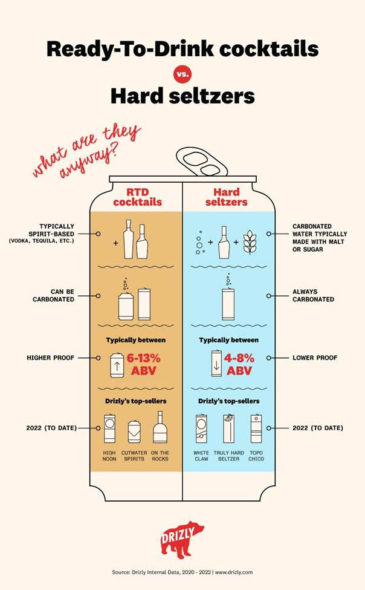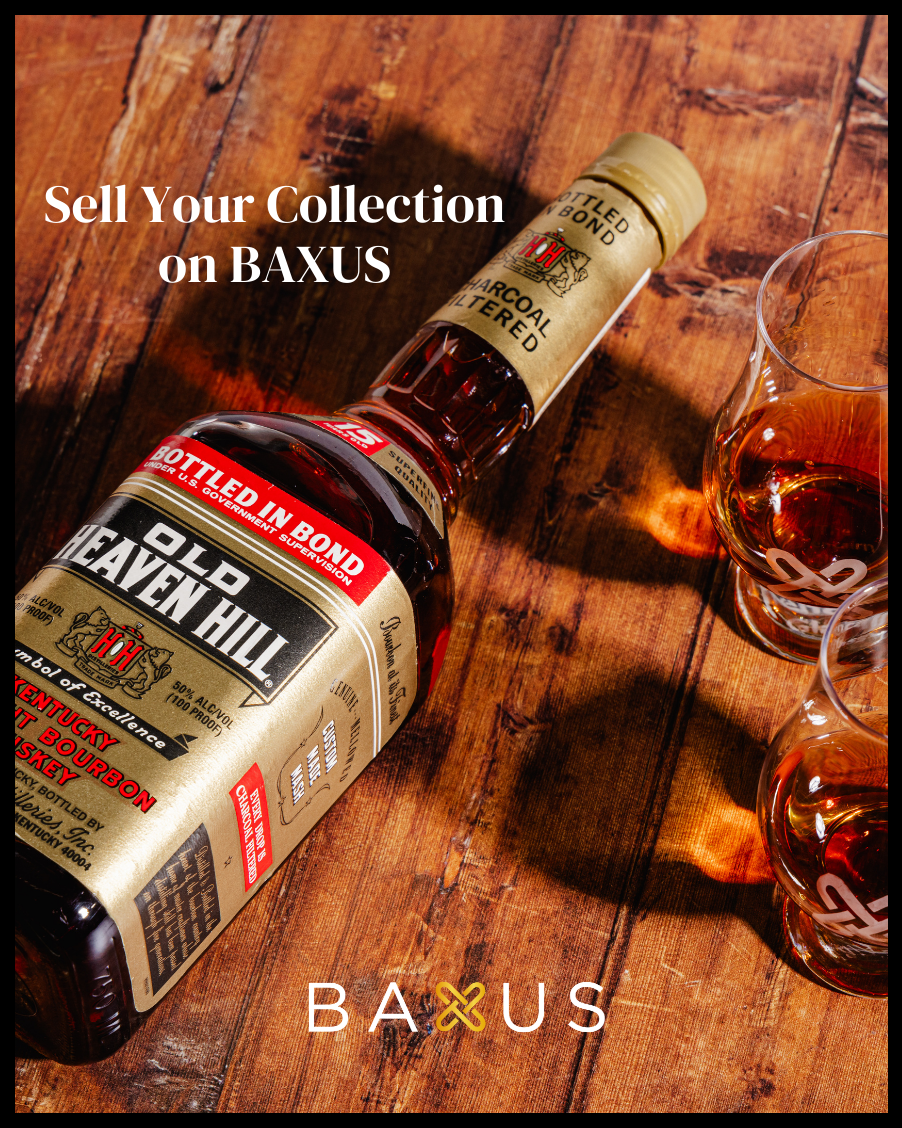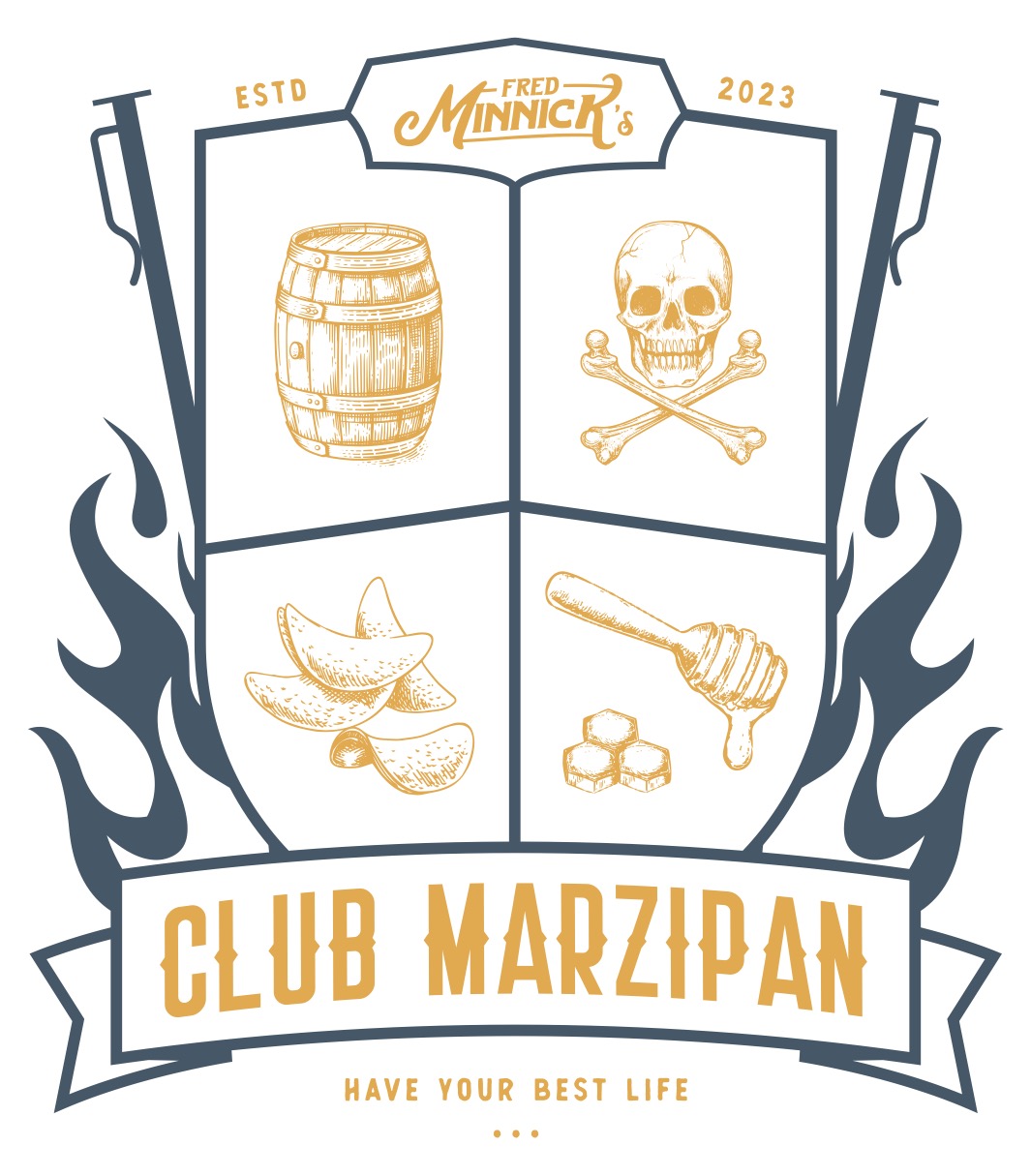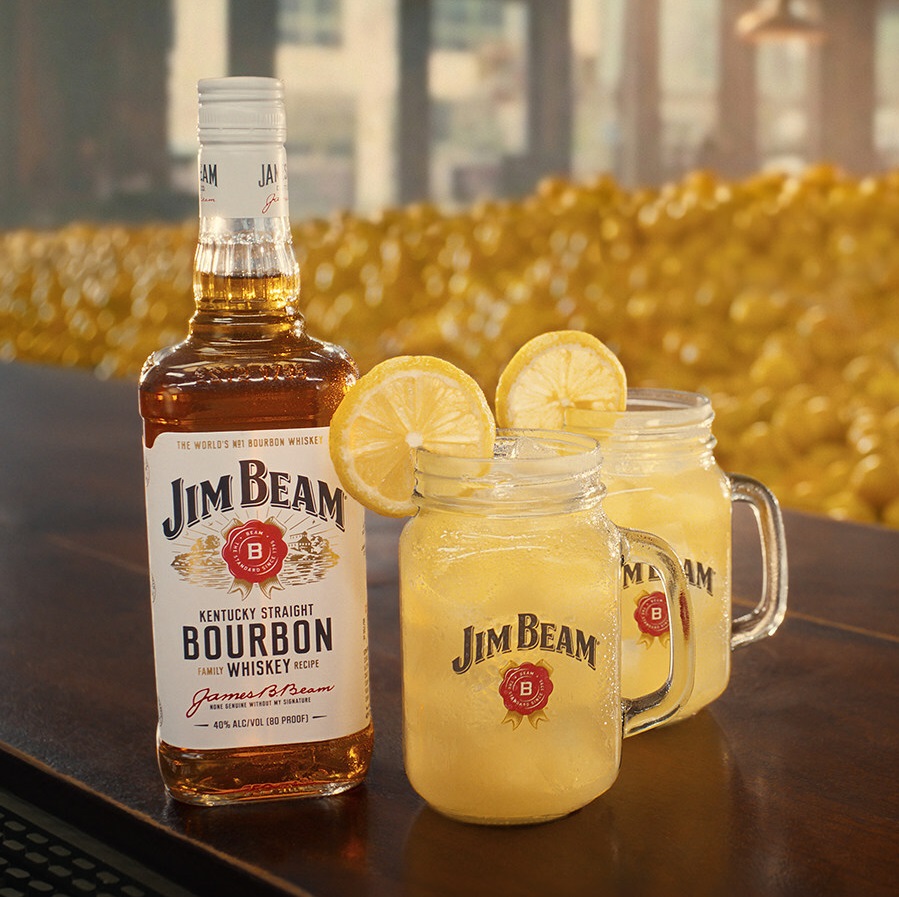Canned Cocktails vs. Hard Seltzers: What’s the Difference?
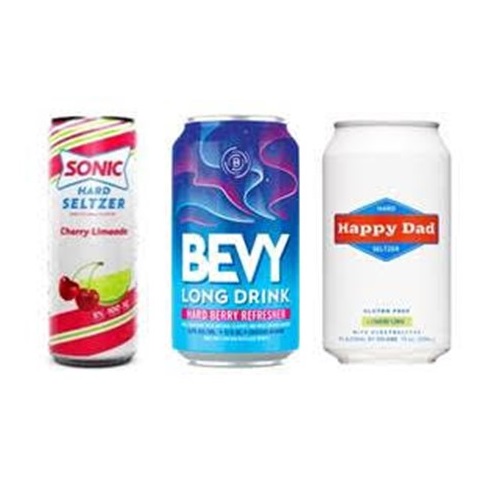
International Canned Cocktail Day happens on Sept. 10, and many consumers don’t know an RTD from a hard seltzer. Drizly is offering up some help.
Canned alcoholic beverages are on the rise, based on Drizly.com sales figures – from 2020-2022, ready-to-drink cocktails (commonly called RTDs) have seen a 127% growth in share, while hard seltzers have fallen by 11% in that time.
What’s the difference? A canned cocktail is generally made with a spirit base, whereas a hard seltzer is usually made with a malt and sugar base. Another difference is that a canned cocktail also is typically higher in alcohol content, with some as high as 12% or 13% ABV. Hard seltzers generally are between 4% and 8%.
The best-selling hard seltzers on Drizly in 2022 so far (see infographic below) are White Claw, Truly Hard Seltzer and Topo Chico. The top-selling canned cocktails on Drizly this year are High Noon, Cutwater and On the Rocks.
One point of confusion is that some RTDs/canned cocktails are carbonated, and some even call themselves a hard seltzer even though they are spirit-based. It’s all very confusing, but at least Drizly is giving us some info to help out.
Drizly also identified three fast-rising canned cocktail brands: Sonic Hard Seltzer (yes, the fast-food chain is in the game), Happy Dad and Bevy Long Drink.
